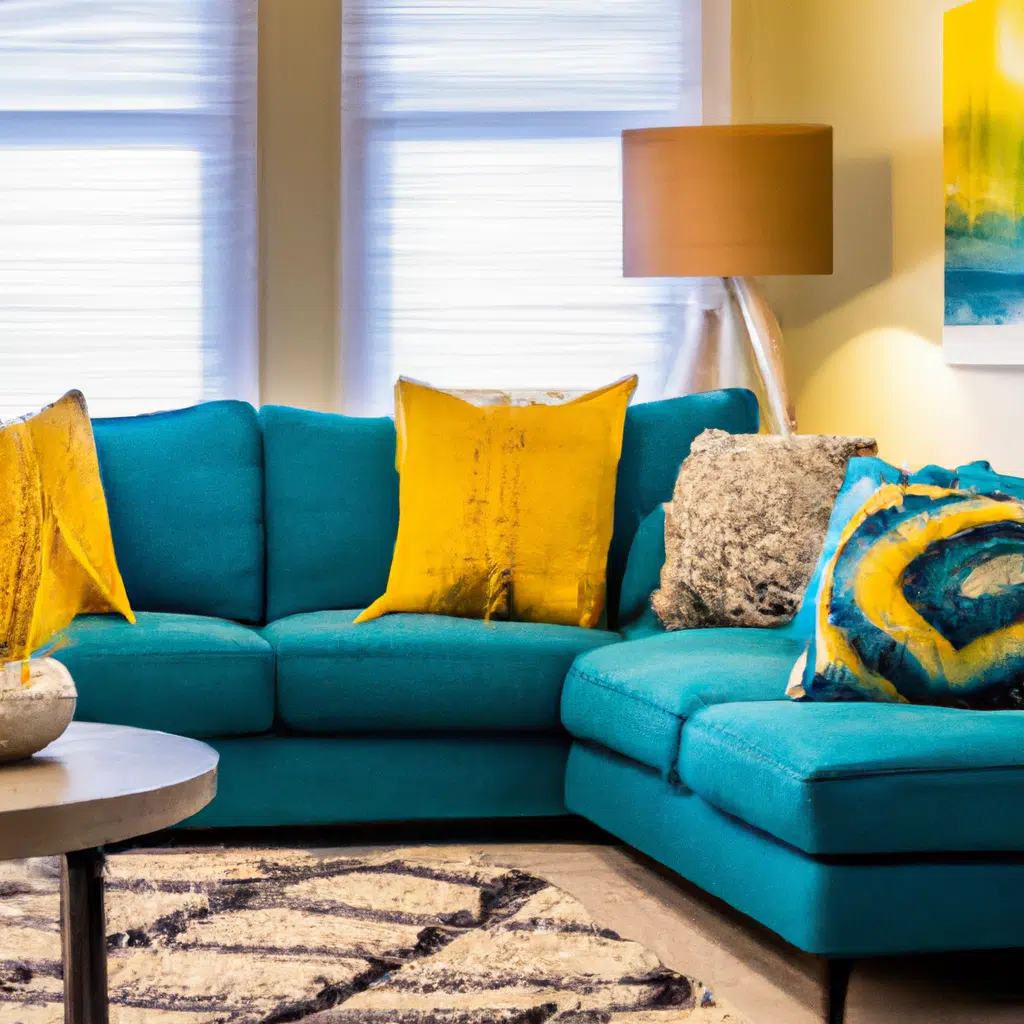
How to Use Color Blocking in Your Home to Create a Trendy and Vibrant Space
Creating a trendy and vibrant space in your home can be a daunting task, but it doesn’t have to be. There are many ways to bring color into a room, but one of the most effective ways is by using color blocking. Color blocking involves pairing two or more contrasting colors together in a room to create a bold and dynamic effect. In this article, we will explore the benefits of color blocking, how to choose the right colors, and how to incorporate color blocking into your home to create a stylish and lively space.
The Benefits of Color Blocking
Color blocking is a popular technique used in fashion, graphic design, and now, interior design. The use of contrasting colors can create a visually striking effect that instantly draws the eye. This technique is especially effective in small spaces or rooms with little natural light, as it can create the illusion of a larger and brighter space. Additionally, color blocking allows you to incorporate multiple colors into a room without overwhelming the space.
Choosing the Right Colors
When it comes to color blocking, choosing the right colors is key. You want to choose colors that complement each other and create a cohesive look. A good rule of thumb is to choose one dominant color and pair it with one or two accent colors. The dominant color should be the main color in the room, while the accent colors should be used sparingly to add pops of color and interest.
When choosing colors, it’s important to consider the mood you want to create in the room. For example, if you want to create a calming and relaxing space, you may want to choose cool colors such as blues and greens. On the other hand, if you want to create a bold and energetic space, you may want to choose warm colors such as reds and oranges.
Incorporating Color Blocking into Your Home
Now that you have an understanding of the benefits of color blocking and how to choose the right colors, it’s time to incorporate this technique into your home. Here are some tips for incorporating color blocking into your home:
1. Start with a Neutral Base
Before incorporating color blocking, it’s important to start with a neutral base. This will allow the colors to stand out and create a more impactful effect. You can use neutral colors such as white, beige, or gray on the walls and furniture.
2. Choose Your Colors Wisely
As mentioned earlier, choosing the right colors is key. When incorporating color blocking into your home, choose colors that complement each other and create a cohesive look. You can use color wheels to help you choose colors that work well together.
3. Use Color Blocking in Small Doses
When incorporating color blocking, it’s important to use it in small doses. This will prevent the room from feeling overwhelming and chaotic. You can use color blocking on accent walls, pillows, rugs, or artwork.
4. Experiment with Patterns
Color blocking doesn’t have to be limited to solid colors. You can also experiment with patterns such as stripes, polka dots, or chevron. Just make sure the patterns complement each other and don’t clash.
5. Don’t Forget About Lighting
Lighting is an important factor to consider when incorporating color blocking into your home. Make sure the room has adequate lighting to showcase the colors and create a bright and lively space.
Conclusion
Color blocking is a simple yet effective way to bring color into your home and create a trendy and vibrant space. By choosing the right colors, starting with a neutral base, and incorporating color blocking in small doses, you can create a visually striking effect that will impress your guests. Remember to experiment with patterns and don’t forget about lighting. Happy decorating!

